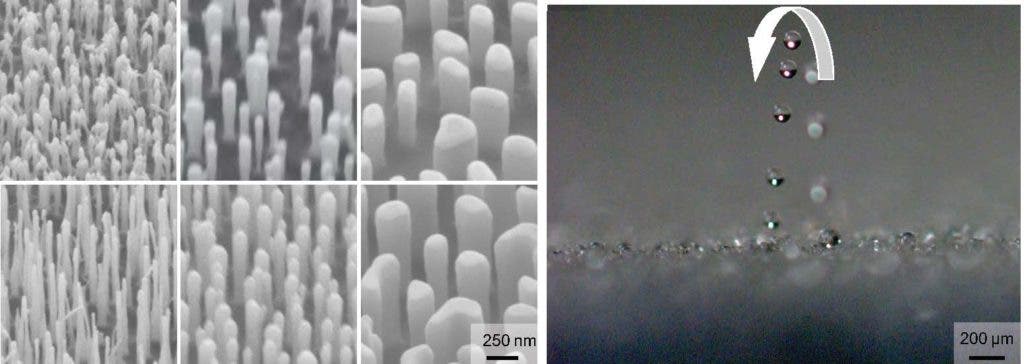Virginia Tech researchers just reported a breakthrough that could help remove condensation much more efficiently than ever before. The study suggests water-repelling surfaces can be tuned such that the expelled water droplets become almost imperceptible to the naked eye.

In 2013, biologists showed that cicadas — the busy insects that fill summer nights with their mating calls — keep their wings fresh and clean with nothing but a spritz of dew drops. The wings are essentially covered in superhydrophobic surfaces that make dew drops “jump” by themselves, carrying contaminants like dust with them. That’s a very nifty trick, one that scientists are currently exploring to cool hotspots in high-performance technologies.
Jonathan Boreyko, an assistant professor in the Department of Biomedical Engineering and Mechanics in the Virginia Tech College of Engineering, has been studying jumping dew droplets since he was in grad school. His research suggests that dew droplets jump from water-repellent surfaces only after they reach a threshold diameter of about 10 micrometers. It was never unclear why until Boreyko and colleagues finally got the bottom of things.
The team designed and tested six different hydrophobic surfaces, all comprised of tiny nanopillars that are reminiscent of stalagmites on a cave’s floor. After testing each surface one by one, the researchers found that the critical size of the jumping dew droplet can be fine tuned if you tweak three parameters: the height, diameter, and pitch of the nanopillars.
“These results, correlated with a theoretical model, revealed that the bottleneck for jumping is how the droplets inflate inside of the surface after they first form,” Boreyko said in a statement.
The taller and slender the nanopillars are, the smaller the water droplets that jump off the surface can become, down to an incredible two micrometers. Conversely, short and stout pillars increase the critical size of the jumping water droplets, up to 20 micrometers in the case of this experiment.
Now that we know the jumping droplet phenomena can be fine tuned, companies can design more efficient condensation removal systems.
“We expect that these findings will allow for maximizing the efficiency of jumping-droplet condensers, which could make power plants more efficient and enable robust anti-fogging and self-cleaning surfaces,” Boreyko said. “The ultimate goal is for all dew droplets forming on a surface to jump off before they are even visible to the eye.”
Findings appeared in the journal ACS Nano.


